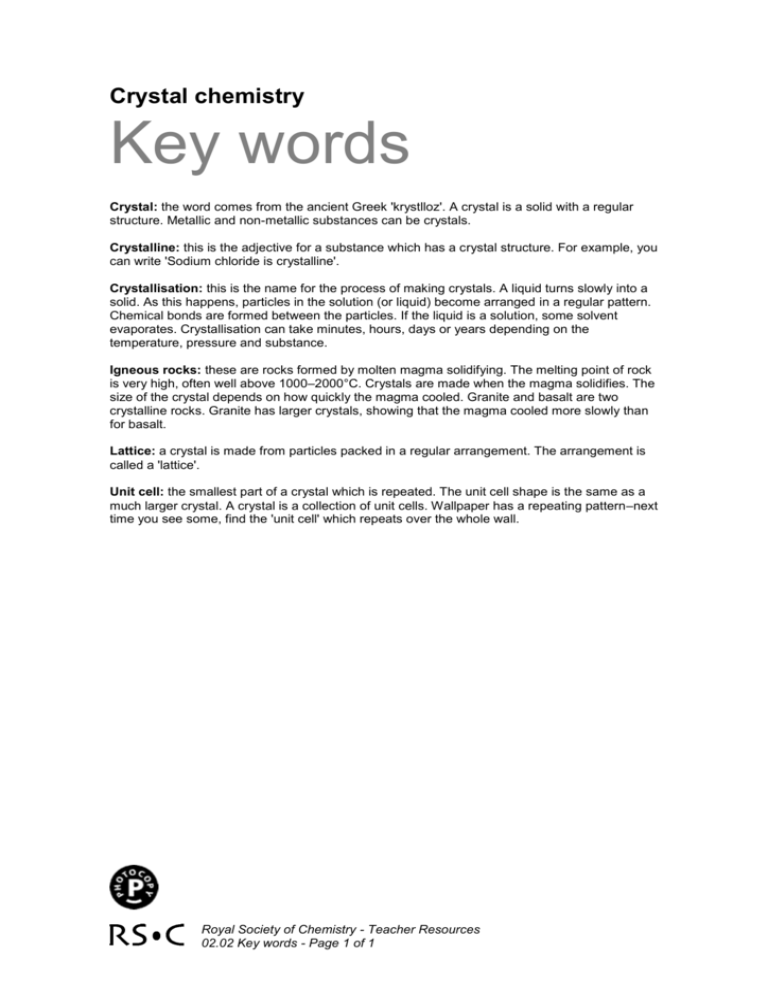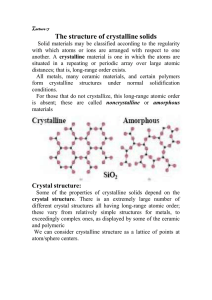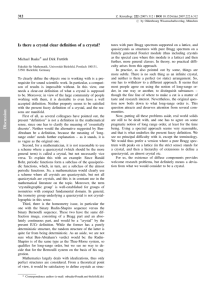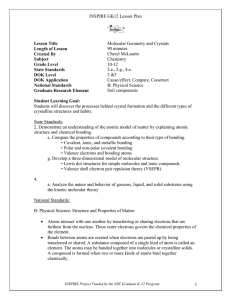0202 - Physics Teacher
advertisement

Crystal chemistry Key words Crystal: the word comes from the ancient Greek 'krystlloz'. A crystal is a solid with a regular structure. Metallic and non-metallic substances can be crystals. Crystalline: this is the adjective for a substance which has a crystal structure. For example, you can write 'Sodium chloride is crystalline'. Crystallisation: this is the name for the process of making crystals. A liquid turns slowly into a solid. As this happens, particles in the solution (or liquid) become arranged in a regular pattern. Chemical bonds are formed between the particles. If the liquid is a solution, some solvent evaporates. Crystallisation can take minutes, hours, days or years depending on the temperature, pressure and substance. Igneous rocks: these are rocks formed by molten magma solidifying. The melting point of rock is very high, often well above 1000–2000°C. Crystals are made when the magma solidifies. The size of the crystal depends on how quickly the magma cooled. Granite and basalt are two crystalline rocks. Granite has larger crystals, showing that the magma cooled more slowly than for basalt. Lattice: a crystal is made from particles packed in a regular arrangement. The arrangement is called a 'lattice'. Unit cell: the smallest part of a crystal which is repeated. The unit cell shape is the same as a much larger crystal. A crystal is a collection of unit cells. Wallpaper has a repeating pattern–next time you see some, find the 'unit cell' which repeats over the whole wall. Royal Society of Chemistry - Teacher Resources 02.02 Key words - Page 1 of 1











